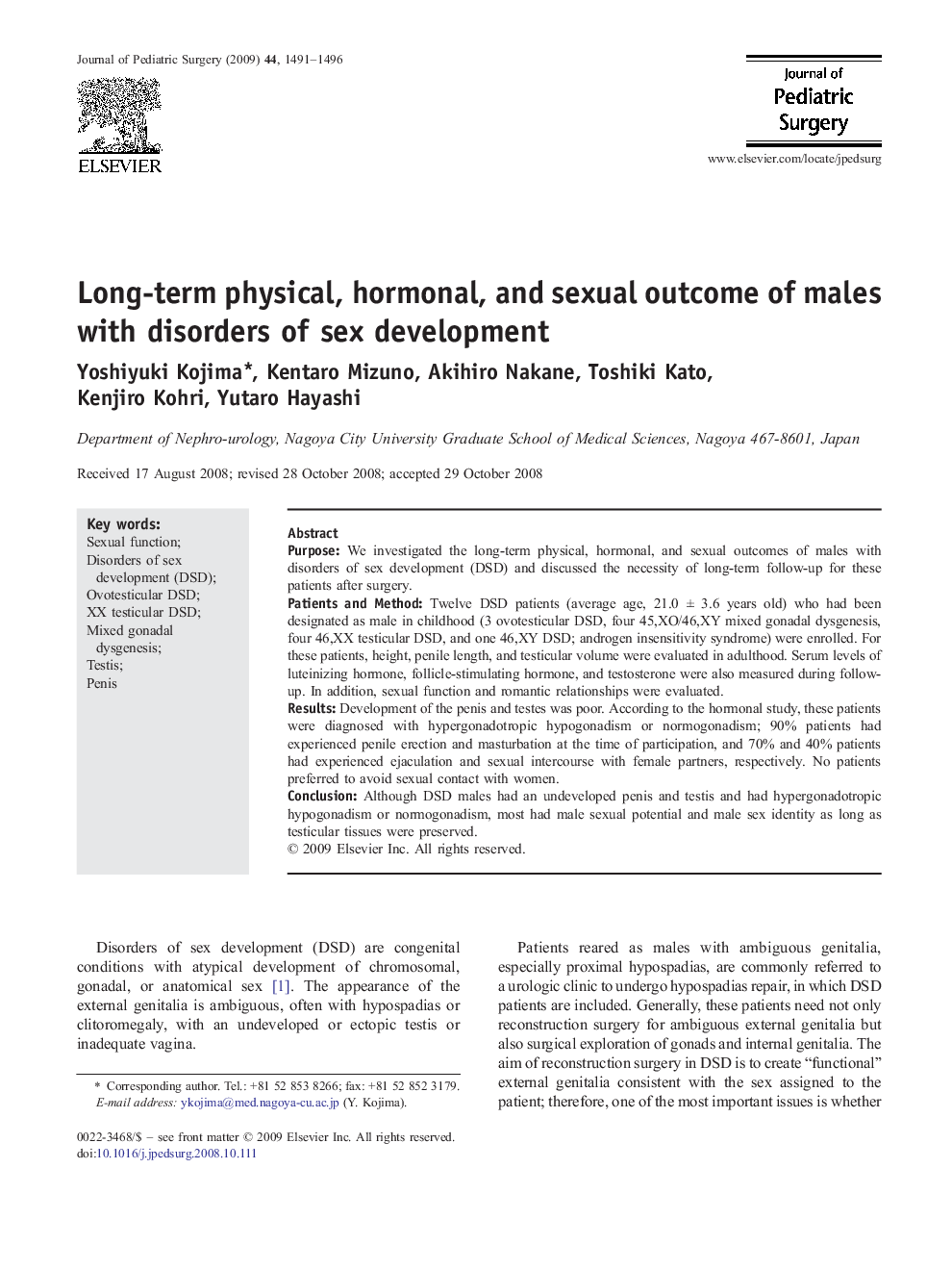| Article ID | Journal | Published Year | Pages | File Type |
|---|---|---|---|---|
| 4158179 | Journal of Pediatric Surgery | 2009 | 6 Pages |
PurposeWe investigated the long-term physical, hormonal, and sexual outcomes of males with disorders of sex development (DSD) and discussed the necessity of long-term follow-up for these patients after surgery.Patients and MethodTwelve DSD patients (average age, 21.0 ± 3.6 years old) who had been designated as male in childhood (3 ovotesticular DSD, four 45,XO/46,XY mixed gonadal dysgenesis, four 46,XX testicular DSD, and one 46,XY DSD; androgen insensitivity syndrome) were enrolled. For these patients, height, penile length, and testicular volume were evaluated in adulthood. Serum levels of luteinizing hormone, follicle-stimulating hormone, and testosterone were also measured during follow-up. In addition, sexual function and romantic relationships were evaluated.ResultsDevelopment of the penis and testes was poor. According to the hormonal study, these patients were diagnosed with hypergonadotropic hypogonadism or normogonadism; 90% patients had experienced penile erection and masturbation at the time of participation, and 70% and 40% patients had experienced ejaculation and sexual intercourse with female partners, respectively. No patients preferred to avoid sexual contact with women.ConclusionAlthough DSD males had an undeveloped penis and testis and had hypergonadotropic hypogonadism or normogonadism, most had male sexual potential and male sex identity as long as testicular tissues were preserved.
